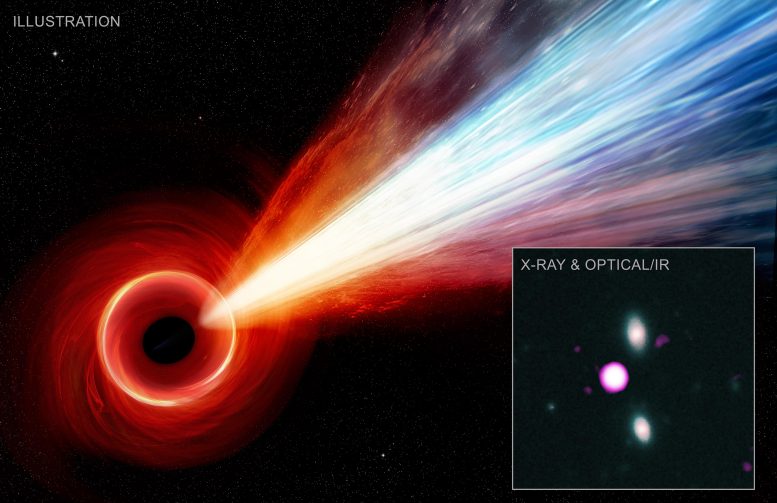Record-Breaking Jet of Particles Spied From a Supermassive Black Hole in the Early Universe
4 Years, 1 Month, 4 Days, 18 Hours, 38 Minutes ago

Astronomers have discovered evidence for an extraordinarily long jet of particles from a supermassive black hole in the early Universe, using NASA’s Chandra X-ray Observatory.
If confirmed, it would be the most distant supermassive black hole with a jet detected in X-rays, coming from a galaxy about 12.7 billion light years from Earth. It may help explain how the biggest black holes formed at a very early time in the Universe’s history.
The source of the jet is a quasar — a rapidly growing supermassive black hole — named PSO J352.4034-15.3373 (PJ352-15 for short), which sits at the center of a young galaxy. It is one of the two most powerful quasars detected in radio waves in the first billion years after the Big Bang, and is about a billion times more massive than the Sun.
How are supermassive black holes able to grow so quickly to reach such an enormous mass in this early epoch of the Universe? This is one of the key questions in astronomy today.